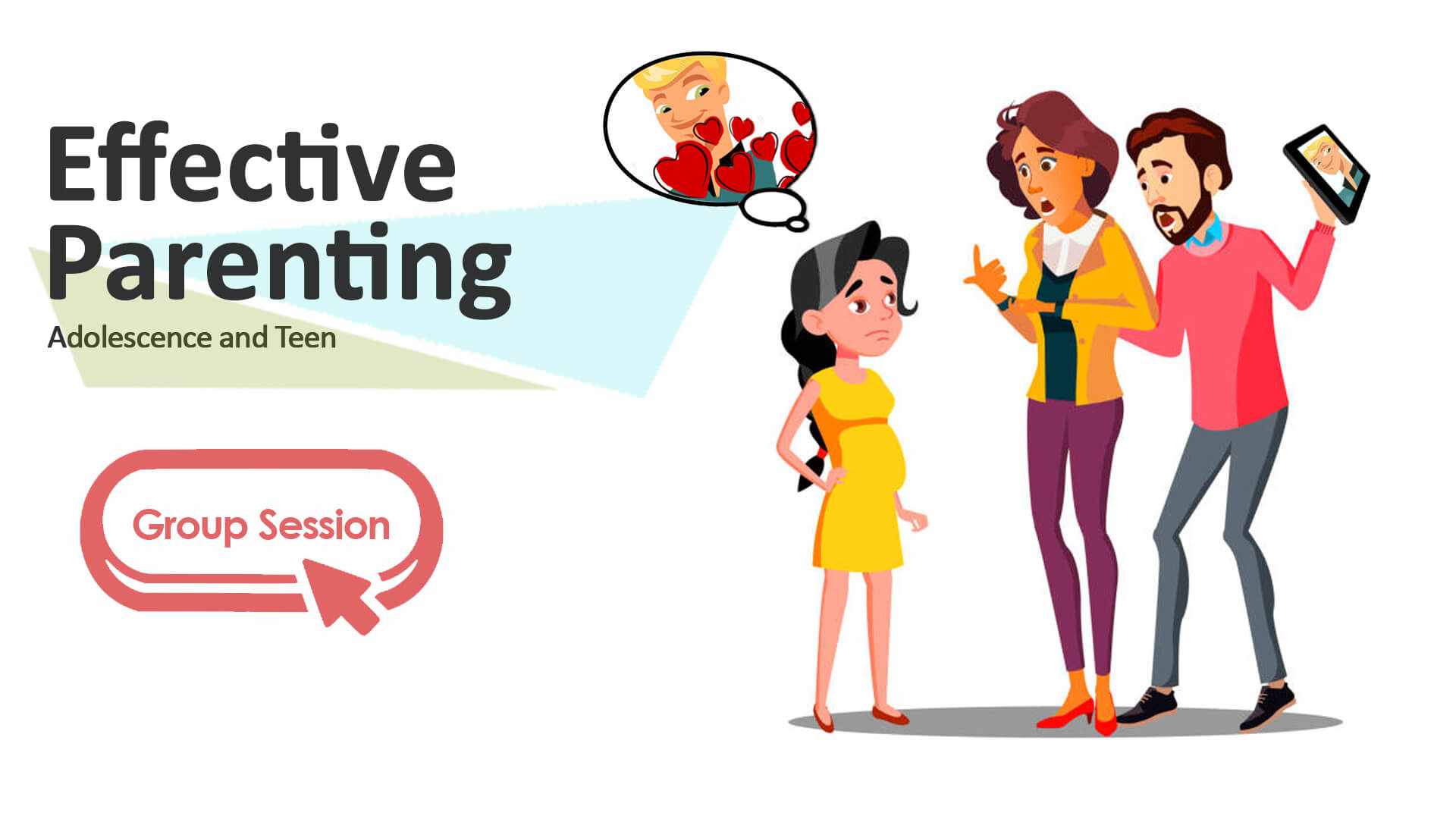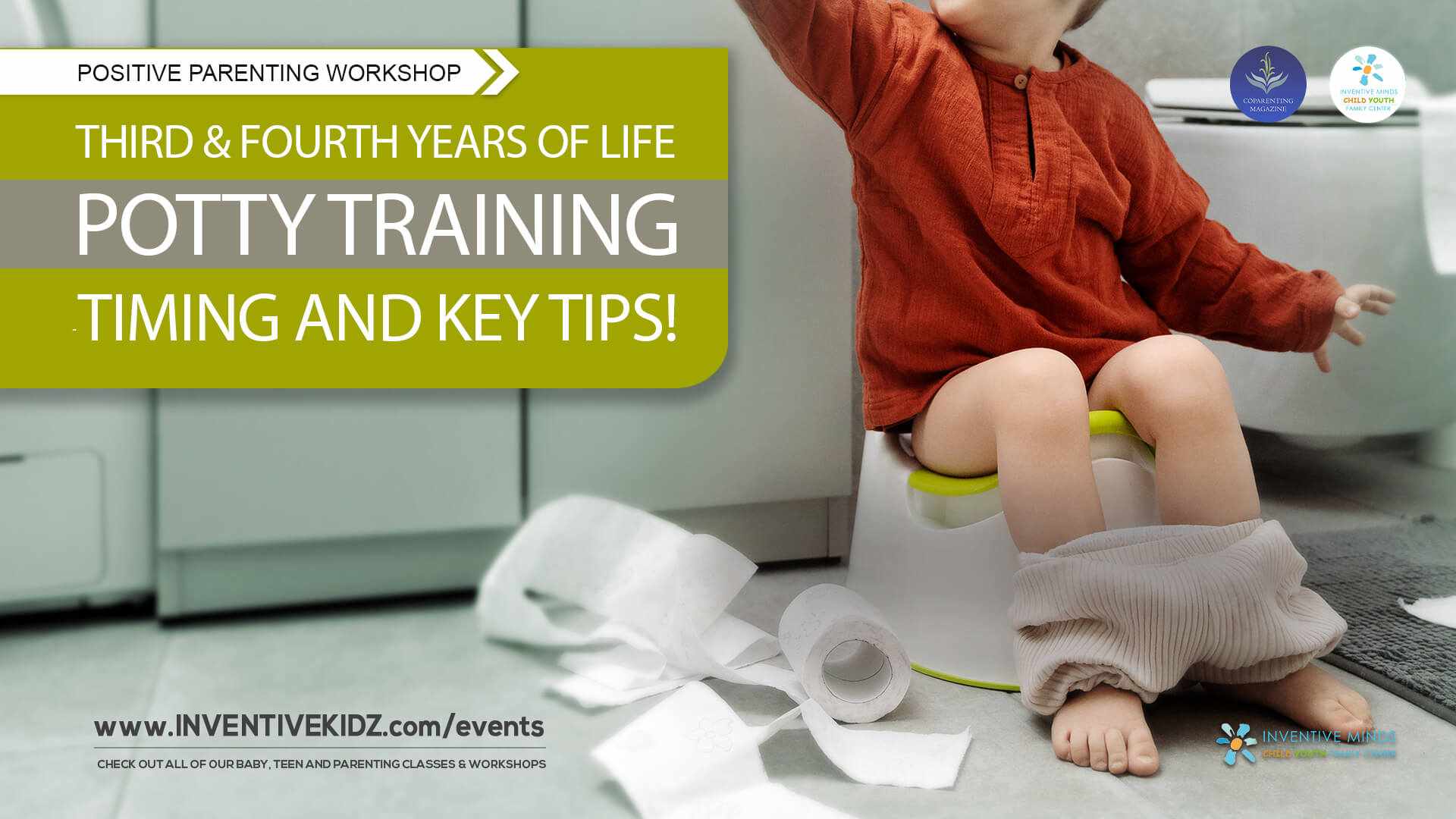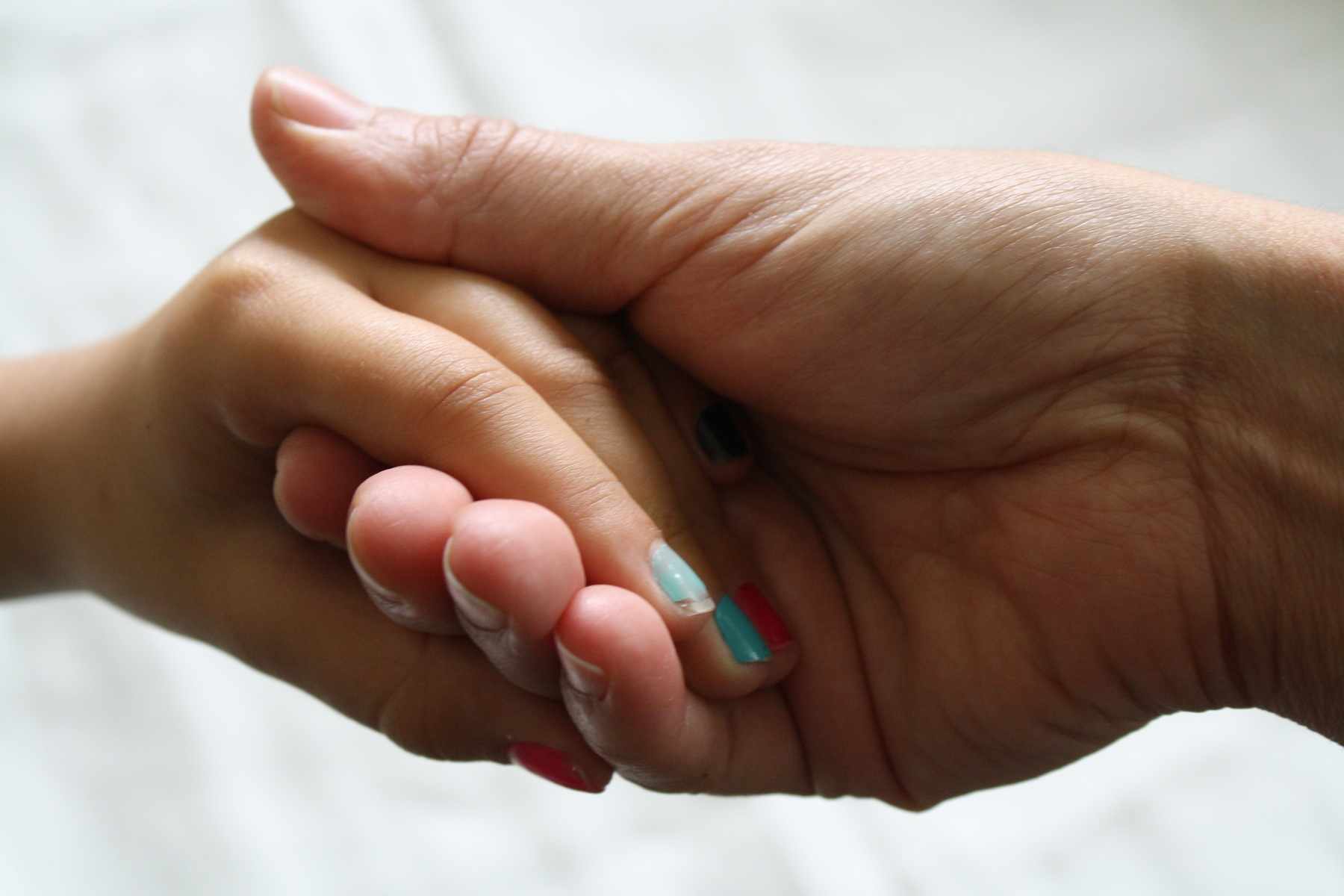Respiratory Illnesses, Airway Obstruction & Choking in Children: Signs, Prevention & Response


Respiratory Illnesses, Airway Obstruction & Choking in Children: Signs, Prevention & Response
 By Inventive Minds Kidz Academy
By Inventive Minds Kidz Academy
 Added Fri, Jun 06 2025
Added Fri, Jun 06 2025
 By Inventive Minds Kidz Academy
By Inventive Minds Kidz Academy
Added Fri, Jun 06 2025
Hey, Thanks For Subscribing!
Please check for a confirmation message and ensure you add us to a safe email list.
If you don't see a message in the next five minutes, check your spam or junk folders and mark our emails safe for next time.
See you soon!
Duplicate Email Found!
Well this is embarrassing... It looks like is already registered.
We have just sent an email to that address with a link to manage the subscription with us. If you don't see a message in the next five minutes, check the spam or junk folders, it's definitely there.
See you soon!
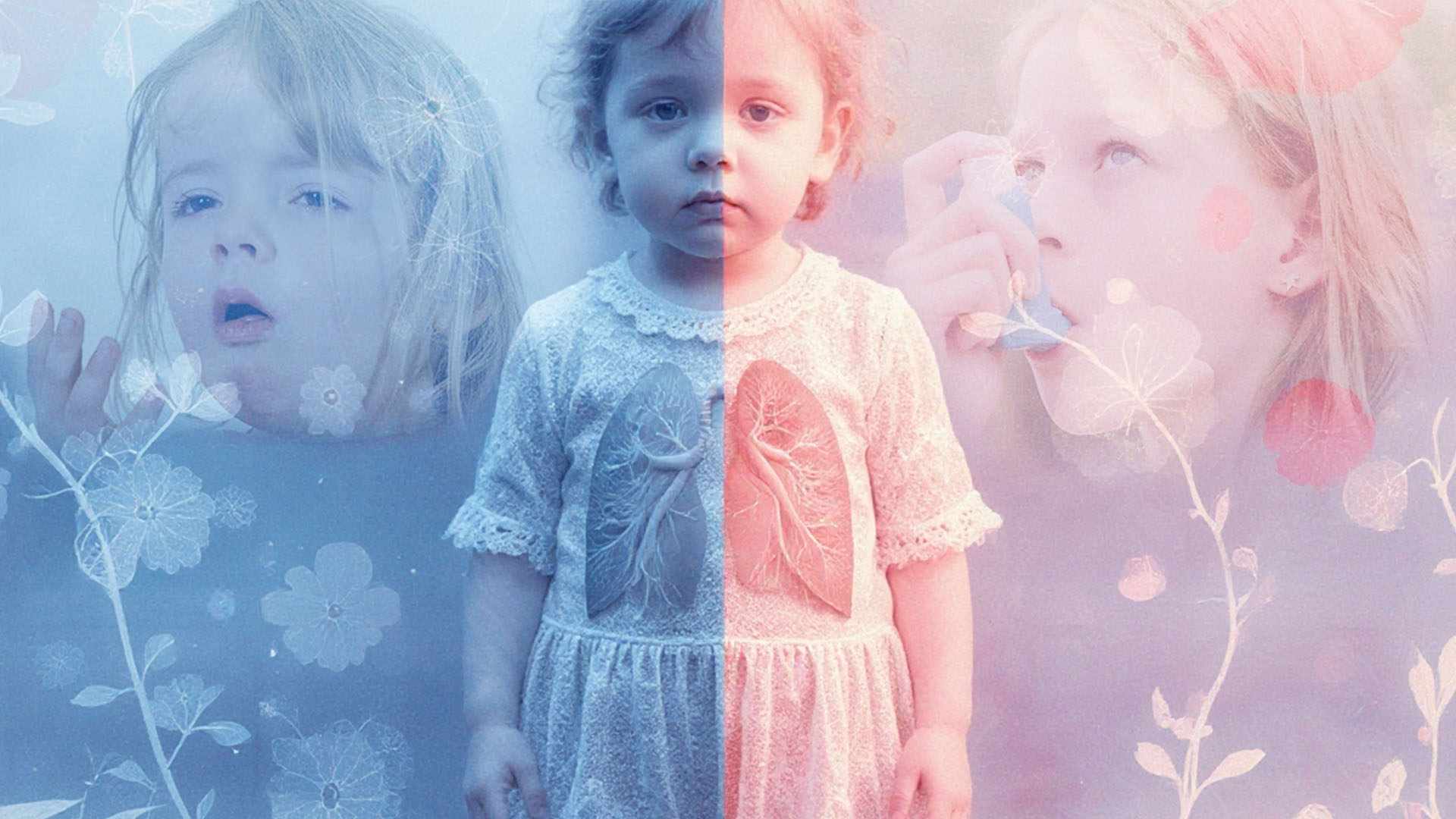
Respiratory illnesses are one of the most common health concerns for children, especially in the first few years of life. Parents often face sleepless nights worrying about their child’s persistent cough, difficulty breathing, or high fever. While many respiratory conditions are mild and resolve on their own, others can lead to serious complications if not properly managed. Choking is also another important respiratory condition among children, mostly infants and toddlers. Understanding these conditions, their symptoms, and when to seek medical help is essential for parents.
In this article, we will discuss the most common and important respiratory conditions of childhood. The most frequent causes of respiratory illness in children include the common cold, which is caused by a variety of viruses, including rhinoviruses and coronaviruses (which includes COVID-19 and many others). The symptoms of a cold typically include a runny nose, nasal congestion, sneezing, mild cough, and sometimes a low-grade fever. Other symptoms might include sore or painful throat, body aches, conjunctivitis, and fatigue. These symptoms usually peak within the first three days and gradually improve over a week to ten days. While colds are generally harmless, they can make young children irritable and affect their feeding and sleep.
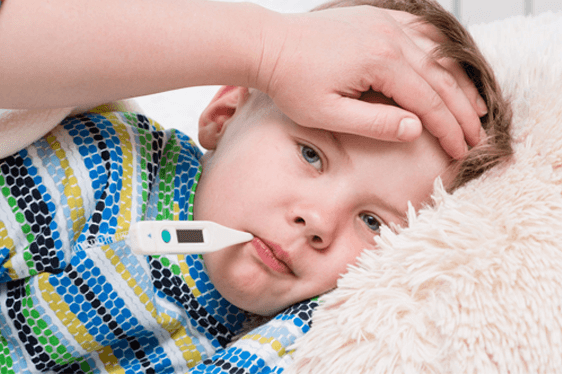
A more concerning viral infection in infants and young children is caused by the Respiratory Syncytial Virus (RSV). RSV is particularly dangerous for babies under one year of age, as it can lead to bronchiolitis, a condition where the small airways in the lungs become inflamed and filled with mucus. According to Nelson Textbook of Pediatrics, RSV is the leading cause of hospitalization for respiratory illness in infants. Symptoms start like a common cold but can progress to wheezing, rapid breathing, and difficulty feeding. In severe cases, infants may show signs of respiratory distress, such as flaring nostrils, grunting sounds, or retractions (when the skin pulls in between the ribs during breathing). If a baby is having trouble breathing, has bluish lips, or is struggling to drink fluids, immediate medical attention is needed.
The best way to manage common colds and RSV infections is through supportive care. Keeping the child hydrated, using saline drops and a bulb syringe for nasal congestion, and running a humidifier in the room can help ease symptoms. Fever and discomfort can be managed with appropriate fever-reducing medications (e.g. acetaminophen). Anti-histamine might be used for nasal congestion and it’s mild sedative effects.
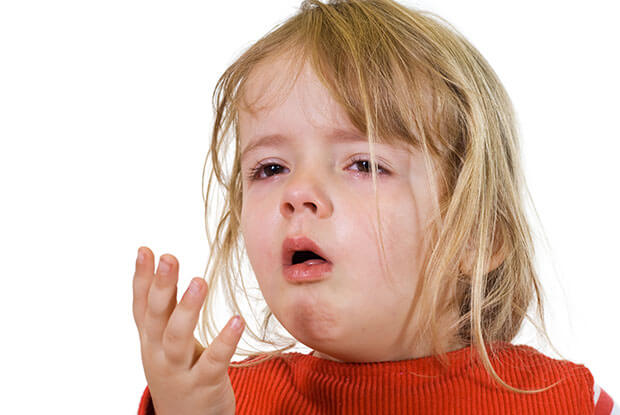
In high-risk infants, a preventive injection may be recommended during RSV season to reduce the severity of infection. Any sign of respiratory distress or a fever that is high and does not lower with OTC fever-reducing medication needs medical attention. Prolongation of the symptoms might be a sign of sinusitis or pneumonia and might medical attention.
Pneumonia: Bacterial vs. Viral
Pneumonia is infection of the lungs, in contrast to common cold and RSV infections which are infections of the airway. Pneumonia can be caused by viruses or bacteria, leading to inflammation and fluid accumulation in the lungs. It is more serious than a common cold or RSV infection and requires close monitoring. According to Nelson Textbook of Pediatrics, the most common cause of bacterial pneumonia in children is Pneumococci, a type of bacteria that can lead to severe respiratory distress. Viral pneumonia, on the other hand, is usually caused by influenza, RSV, or adenoviruses. In recent years Covid-19 which is a type of coronavirus has also been a common pathogen for viral pneumonia.
The symptoms of pneumonia vary depending on the cause. Viral pneumonia often starts with mild cold-like symptoms, including a cough, fever, and fatigue. As the infection progresses, the child may develop a deeper, persistent cough and labored breathing. Bacterial pneumonia tends to come on more suddenly, with a high fever, chills, a productive cough with yellow or green mucus, and rapid breathing. One way to tell if a child is struggling is to observe their breathing rate. Fast breathing, wheezing, or using extra muscles to breathe (such as pulling in the chest or flaring nostrils) are signs that require urgent medical evaluation.
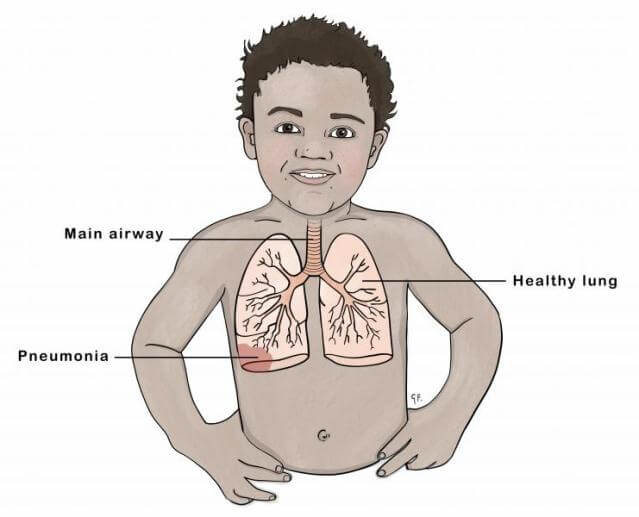
Treatment for pneumonia depends on its cause. Viral pneumonia is usually managed with rest, hydration, and fever control, while bacterial pneumonia requires antibiotic treatment. More severe cases usually need hospitalization for oxygen support and intravenous fluids. Parents should seek medical attention if their child has a persistent high fever, difficulty breathing, or signs of dehydration such as reduced urine output or dry lips. As we mentioned before, any sign of pneumonia or prolonged cold is a good reason to visit a specialist, as children often need antibiotics for treatment or prophylaxis of bacterial infections.
Wheezing and Asthma in Children
Wheezing is a high-pitched, whistling sound that occurs when air moves through narrowed airways. It can happen during viral infections, allergic reactions, or chronic conditions like asthma. Many parents worry when they hear their child wheezing, but not all wheezing is serious or a sign of asthma. Young children often wheeze when they have colds or other viral infections because their airways are smaller and more prone to inflammation.
Asthma is a long-term condition where the airways become overly sensitive to triggers such as dust, pet dander, pollen, smoke, and respiratory infections. When exposed to these triggers, the airways swell, produce extra mucus, and tighten, making it difficult for the child to breathe. Symptoms of asthma include recurrent wheezing, nighttime coughing, shortness of breath, and chest tightness. Some children may only have symptoms occasionally, while others experience frequent episodes.
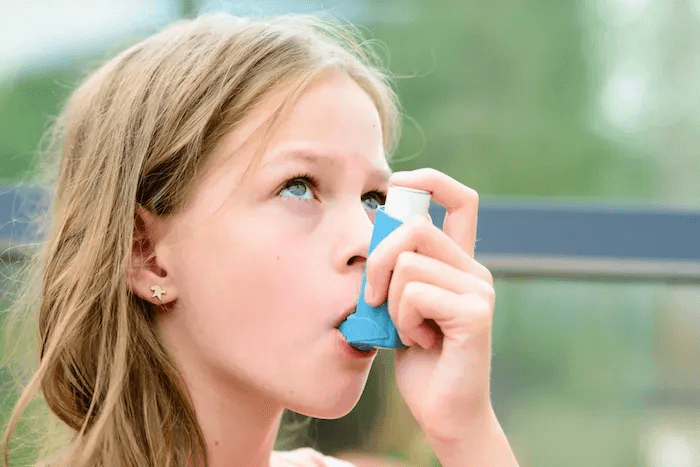
According to Nelson Textbook of Pediatrics, asthma in children is often underdiagnosed, leading to unnecessary discomfort and frequent hospital visits. Proper management includes identifying triggers, using prescribed inhalers for symptom relief, and making lifestyle adjustments, such as avoiding smoke exposure and using air purifiers. If a child experiences frequent wheezing episodes or has difficulty speaking in full sentences during an attack, immediate medical attention is required.
Choking and Other Airway Obstructions
Choking and airway obstruction are medical emergencies that require immediate intervention. Young children, especially those under three years old, are at high risk of choking because they often explore the world by putting objects in their mouths. Common choking hazards include small foods like nuts, grapes, hot dogs, and pieces of hard candy, as well as small toys, coins, and balloons.
One of the first signs of airway obstruction is sudden coughing, as the child’s body instinctively attempts to clear the object by coughing forcefully. If the blockage is only partial, the child may still be able to cough, cry, or talk, indicating that some air is passing through. However, if the airway is completely blocked, the child will be unable to make any sound, may clutch their throat, and their face may turn blue due to lack of oxygen—this is a life-threatening situation requiring immediate action.
At any age, the first step is to call 9-1-1, or preferably have someone else call while you attend to the child.
For infants under one year old, the recommended response is to place the baby face down over your forearm and deliver five firm back blows between the shoulder blades. Then, turn the infant face-up with their head lower than their body and give five chest thrusts. Continue alternating these steps until the infant can cough or cry. If the infant becomes unresponsive during the process, CPR should be started immediately.
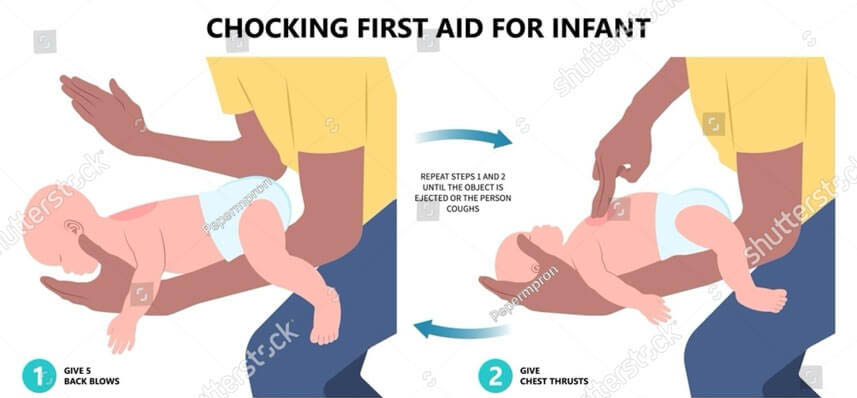
For older children, the Heimlich maneuver is recommended. This involves standing behind the child, wrapping your arms around their waist, making a fist, and delivering quick inward and upward thrusts just above the belly button. If the child becomes unresponsive, CPR should be initiated immediately while waiting for emergency assistance.
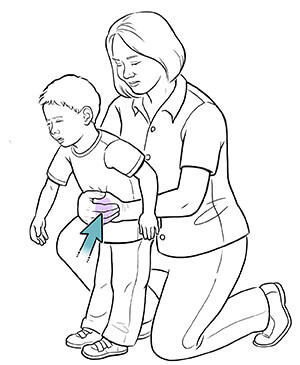
Aside from choking, other causes of airway obstruction include croup—which causes swelling of the upper airway and results in a barking cough—and severe allergic reactions, which can cause the throat to swell shut. Croup, which is more common during toddlerhood, is discussed elsewhere in relation to common childhood diseases. Severe allergic reactions and anaphylaxis will also be covered in a separate section. In general, if a child is experiencing difficulty breathing, persistent wheezing that does not improve, or signs of an allergic reaction such as facial swelling, immediate medical care is essential.
References
-
Nelson Textbook of Pediatrics, 22nd Edition
Respiratory illnesses are one of the most common health concerns for children, especially in the first few years of life. Parents often face sleepless nights worrying about their child’s persistent cough, difficulty breathing, or high fever. While many respiratory conditions are mild and resolve on their own, others can lead to serious complications if not properly managed. Choking is also another important respiratory condition among children, mostly infants and toddlers. Understanding these conditions, their symptoms, and when to seek medical help is essential for parents.
In this article, we will discuss the most common and important respiratory conditions of childhood. The most frequent causes of respiratory illness in children include the common cold, which is caused by a variety of viruses, including rhinoviruses and coronaviruses (which includes COVID-19 and many others). The symptoms of a cold typically include a runny nose, nasal congestion, sneezing, mild cough, and sometimes a low-grade fever. Other symptoms might include sore or painful throat, body aches, conjunctivitis, and fatigue. These symptoms usually peak within the first three days and gradually improve over a week to ten days. While colds are generally harmless, they can make young children irritable and affect their feeding and sleep.

A more concerning viral infection in infants and young children is caused by the Respiratory Syncytial Virus (RSV). RSV is particularly dangerous for babies under one year of age, as it can lead to bronchiolitis, a condition where the small airways in the lungs become inflamed and filled with mucus. According to Nelson Textbook of Pediatrics, RSV is the leading cause of hospitalization for respiratory illness in infants. Symptoms start like a common cold but can progress to wheezing, rapid breathing, and difficulty feeding. In severe cases, infants may show signs of respiratory distress, such as flaring nostrils, grunting sounds, or retractions (when the skin pulls in between the ribs during breathing). If a baby is having trouble breathing, has bluish lips, or is struggling to drink fluids, immediate medical attention is needed.
The best way to manage common colds and RSV infections is through supportive care. Keeping the child hydrated, using saline drops and a bulb syringe for nasal congestion, and running a humidifier in the room can help ease symptoms. Fever and discomfort can be managed with appropriate fever-reducing medications (e.g. acetaminophen). Anti-histamine might be used for nasal congestion and it’s mild sedative effects.

In high-risk infants, a preventive injection may be recommended during RSV season to reduce the severity of infection. Any sign of respiratory distress or a fever that is high and does not lower with OTC fever-reducing medication needs medical attention. Prolongation of the symptoms might be a sign of sinusitis or pneumonia and might medical attention.
Pneumonia: Bacterial vs. Viral
Pneumonia is infection of the lungs, in contrast to common cold and RSV infections which are infections of the airway. Pneumonia can be caused by viruses or bacteria, leading to inflammation and fluid accumulation in the lungs. It is more serious than a common cold or RSV infection and requires close monitoring. According to Nelson Textbook of Pediatrics, the most common cause of bacterial pneumonia in children is Pneumococci, a type of bacteria that can lead to severe respiratory distress. Viral pneumonia, on the other hand, is usually caused by influenza, RSV, or adenoviruses. In recent years Covid-19 which is a type of coronavirus has also been a common pathogen for viral pneumonia.
The symptoms of pneumonia vary depending on the cause. Viral pneumonia often starts with mild cold-like symptoms, including a cough, fever, and fatigue. As the infection progresses, the child may develop a deeper, persistent cough and labored breathing. Bacterial pneumonia tends to come on more suddenly, with a high fever, chills, a productive cough with yellow or green mucus, and rapid breathing. One way to tell if a child is struggling is to observe their breathing rate. Fast breathing, wheezing, or using extra muscles to breathe (such as pulling in the chest or flaring nostrils) are signs that require urgent medical evaluation.

Treatment for pneumonia depends on its cause. Viral pneumonia is usually managed with rest, hydration, and fever control, while bacterial pneumonia requires antibiotic treatment. More severe cases usually need hospitalization for oxygen support and intravenous fluids. Parents should seek medical attention if their child has a persistent high fever, difficulty breathing, or signs of dehydration such as reduced urine output or dry lips. As we mentioned before, any sign of pneumonia or prolonged cold is a good reason to visit a specialist, as children often need antibiotics for treatment or prophylaxis of bacterial infections.
Wheezing and Asthma in Children
Wheezing is a high-pitched, whistling sound that occurs when air moves through narrowed airways. It can happen during viral infections, allergic reactions, or chronic conditions like asthma. Many parents worry when they hear their child wheezing, but not all wheezing is serious or a sign of asthma. Young children often wheeze when they have colds or other viral infections because their airways are smaller and more prone to inflammation.
Asthma is a long-term condition where the airways become overly sensitive to triggers such as dust, pet dander, pollen, smoke, and respiratory infections. When exposed to these triggers, the airways swell, produce extra mucus, and tighten, making it difficult for the child to breathe. Symptoms of asthma include recurrent wheezing, nighttime coughing, shortness of breath, and chest tightness. Some children may only have symptoms occasionally, while others experience frequent episodes.

According to Nelson Textbook of Pediatrics, asthma in children is often underdiagnosed, leading to unnecessary discomfort and frequent hospital visits. Proper management includes identifying triggers, using prescribed inhalers for symptom relief, and making lifestyle adjustments, such as avoiding smoke exposure and using air purifiers. If a child experiences frequent wheezing episodes or has difficulty speaking in full sentences during an attack, immediate medical attention is required.
Choking and Other Airway Obstructions
Choking and airway obstruction are medical emergencies that require immediate intervention. Young children, especially those under three years old, are at high risk of choking because they often explore the world by putting objects in their mouths. Common choking hazards include small foods like nuts, grapes, hot dogs, and pieces of hard candy, as well as small toys, coins, and balloons.
One of the first signs of airway obstruction is sudden coughing, as the child’s body instinctively attempts to clear the object by coughing forcefully. If the blockage is only partial, the child may still be able to cough, cry, or talk, indicating that some air is passing through. However, if the airway is completely blocked, the child will be unable to make any sound, may clutch their throat, and their face may turn blue due to lack of oxygen—this is a life-threatening situation requiring immediate action.
At any age, the first step is to call 9-1-1, or preferably have someone else call while you attend to the child.
For infants under one year old, the recommended response is to place the baby face down over your forearm and deliver five firm back blows between the shoulder blades. Then, turn the infant face-up with their head lower than their body and give five chest thrusts. Continue alternating these steps until the infant can cough or cry. If the infant becomes unresponsive during the process, CPR should be started immediately.

For older children, the Heimlich maneuver is recommended. This involves standing behind the child, wrapping your arms around their waist, making a fist, and delivering quick inward and upward thrusts just above the belly button. If the child becomes unresponsive, CPR should be initiated immediately while waiting for emergency assistance.

Aside from choking, other causes of airway obstruction include croup—which causes swelling of the upper airway and results in a barking cough—and severe allergic reactions, which can cause the throat to swell shut. Croup, which is more common during toddlerhood, is discussed elsewhere in relation to common childhood diseases. Severe allergic reactions and anaphylaxis will also be covered in a separate section. In general, if a child is experiencing difficulty breathing, persistent wheezing that does not improve, or signs of an allergic reaction such as facial swelling, immediate medical care is essential.
References
-
Nelson Textbook of Pediatrics, 22nd Edition
Most Talked About Posts
You May Also Like
Staff Picks
Now Trending
Our Newsletter
Duplicate Email Found!
Well this is embarrassing... It looks like is already registered.
We have just sent an email to that address with a link to manage the subscription with us. If you don't see a message in the next five minutes, check the spam or junk folders, it's definitely there.
See you soon!
Join Our Newsletter
Hey, Thanks For Subscribing!
Please check for a confirmation message and ensure you add us to a safe email list.
If you don't see a message in the next five minutes, check your spam or junk folders and mark our emails safe for next time.
See you soon!
Duplicate Email Found!
Well this is embarrassing... It looks like is already registered.
We have just sent an email to that address with a link to manage the subscription with us. If you don't see a message in the next five minutes, check the spam or junk folders, it's definitely there.
See you soon!
